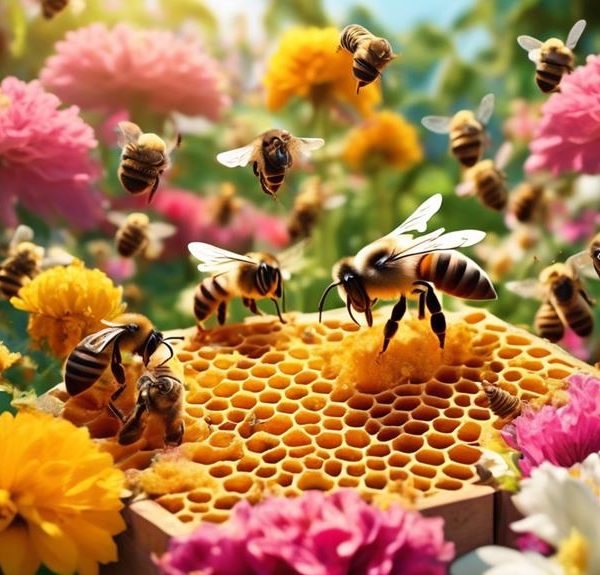Trace the intriguing journey of queen bees, their trials of rejection, and the impact of their absence on the hive's survival.
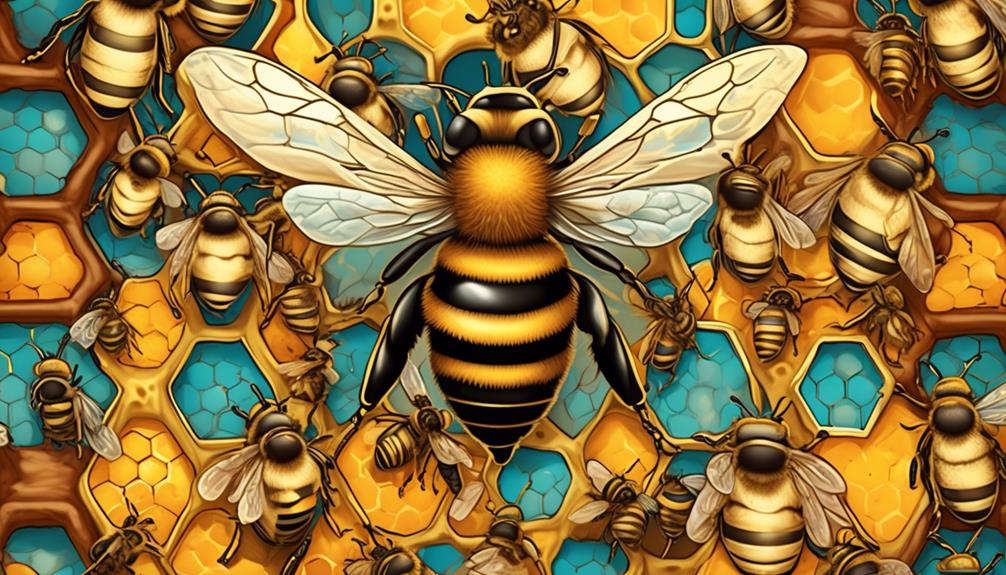
Why Do Queen Bees Get Rejected?
In the world of bees, the queen reigns, the workers labor, and the drones serve. But what happens when the very hive the queen presides over rejects her?
You might be intrigued to know that this is not an uncommon occurrence in bee colonies. Queen bees, despite their royal title, can face rejection from their hive under certain circumstances. As we explore this fascinating aspect of bee behavior, consider the factors that lead to this rejection and the subsequent effects on the hive.
However, the real question isn't just why they get rejected, but what happens to a hive once its queen is gone?
Key Takeaways
- The role of the queen bee is crucial in maintaining unity and harmony within the hive.
- Queen bees can be replaced if they fail to meet the colony's needs, such as low fertility or poor performance.
- The rejection process by worker bees is not an attack but a necessary step for the survival and prosperity of the hive.
- The resilience and wisdom of bees are showcased through their ability to recognize and reject unfit queens, ensuring only the fittest lead the hive.
Understanding Bee Colony Hierarchy

Dive into the fascinating world of bee colonies, where understanding the hierarchy isn't just intriguing, but essential to comprehend the survival and functioning of these industrious insects. You'll soon realize, it's a monarchy with the queen bee reigning supreme. Her sole purpose is to lay eggs and ensure the continuity of the hive.
Worker bees, all sterile females, are the backbone, fulfilling multiple roles from gathering nectar, making honey, to caring for larvae. Lastly, the drones, males, have one job – to mate with the queen.
The queen bee's authority, however, isn't absolute. If she's too weak or old, the workers will make a new queen by feeding a larva royal jelly, leading to a deadly duel between the old and new queen. You'll find it's a ruthless yet fascinating system where survival and efficiency are paramount.
Your understanding of this hierarchy isn't just academic, it's the key to appreciating the complex dynamics that allow these tiny creatures to thrive. It's a testament to nature's ingenuity, illustrating how every individual, no matter how seemingly insignificant, plays a critical role in the grand scheme.
The Role of Queen Bees

Now that you've grasped the intricacies of the bee colony hierarchy, let's focus on the queen bee, the crown jewel of the hive, whose role extends far beyond just laying eggs. She's a tireless worker, a beacon of fertility, and the lifeblood of her hive. It's her job to lay as many as 2,000 eggs per day, ensuring the survival and growth of the colony.
But her role doesn't end there. She's also the embodiment of unity, her unique pheromones acting like a glue that binds the colony together. She's the mother, the ruler, and the provider, her mere presence sufficient to maintain order and harmony within her buzzing kingdom.
She's also a figure of sacrifice. Should she falter or fail, she's immediately replaced, a brutal indicator of the hive's ruthless dedication to survival. Additionally, she's a navigator, leading her swarm in the quest for new homes when necessary.
Causes of Queen Bee Rejection
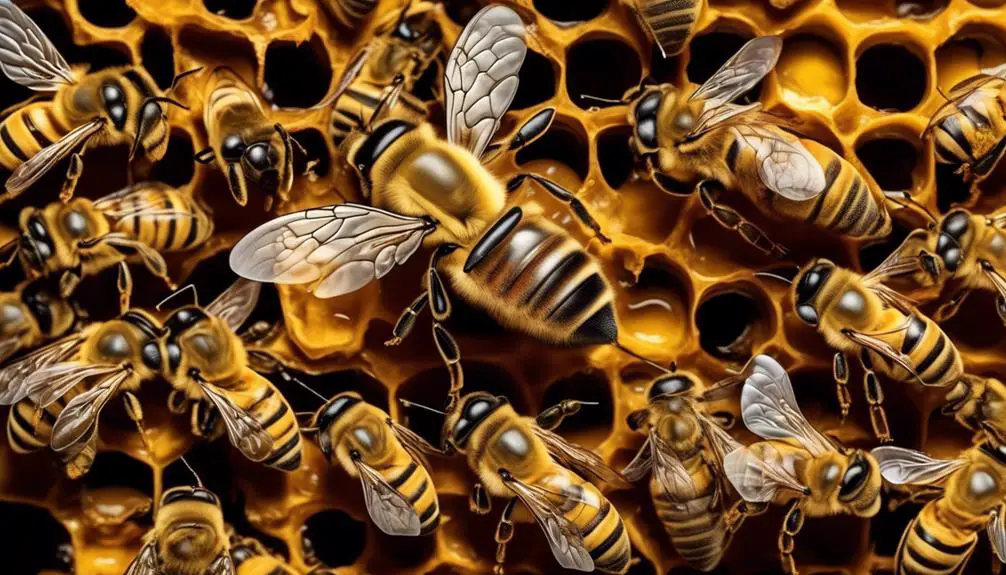
Despite the queen bee's vital role within the hive, there are instances when she's rejected or replaced by her own colony, a fascinating phenomenon rooted in survival and driven by various factors. You see, bees aren't just mindless drones. They're part of a complex, intelligent system and they understand when their queen isn't performing up to par.
One cause of rejection is the queen's fertility. If she's not producing enough eggs to maintain the hive, the workers will replace her. Similarly, if she's injured or ill, she won't be able to fulfill her duties, leading to her ousting.
Age is another factor. As the queen ages, her pheromone production decreases, and without these chemical signals, the colony's organization can fall apart.
Observing the Rejection Process
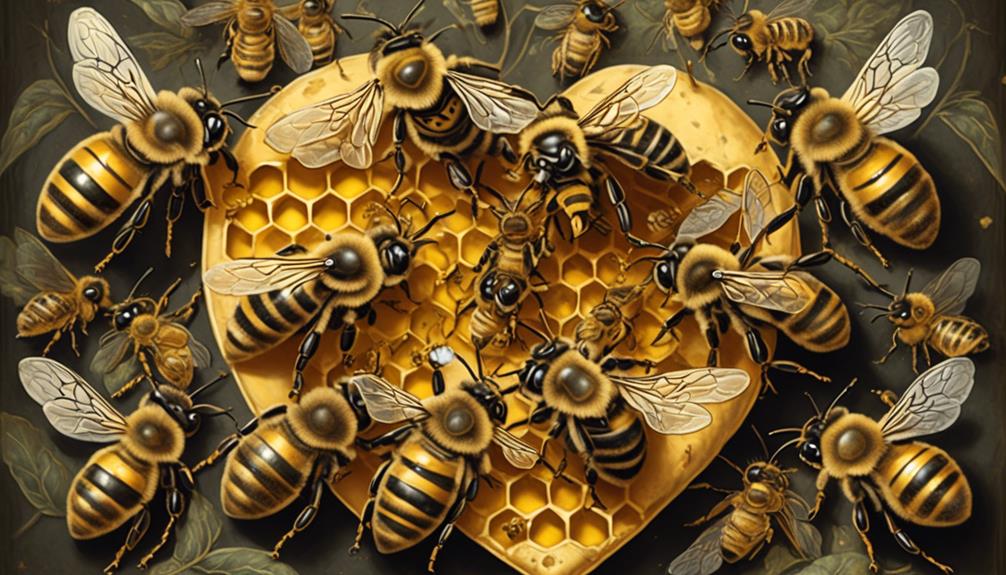
In the intricate world of bees, observing the queen's rejection process reveals an astonishing display of collective decision-making and survival instinct at play. You'll notice a sudden shift in the hive's demeanor – there's a sense of urgency, tension even. Worker bees start balling around the queen, a phenomenon that's as fascinating as it's brutal. They're not attacking, but rather, they're generating heat to raise her body temperature, essentially overheating her. It's a grim spectacle but a necessary one for the hive's survival.
You might wonder, why such a harsh method? Well, the hive's health is the colony's priority. If the queen is underperforming, or if she's too old and her fertility is waning, it's a risk they can't afford. They need a fertile, strong queen to ensure the colony's future.
Impact on the Hive's Future
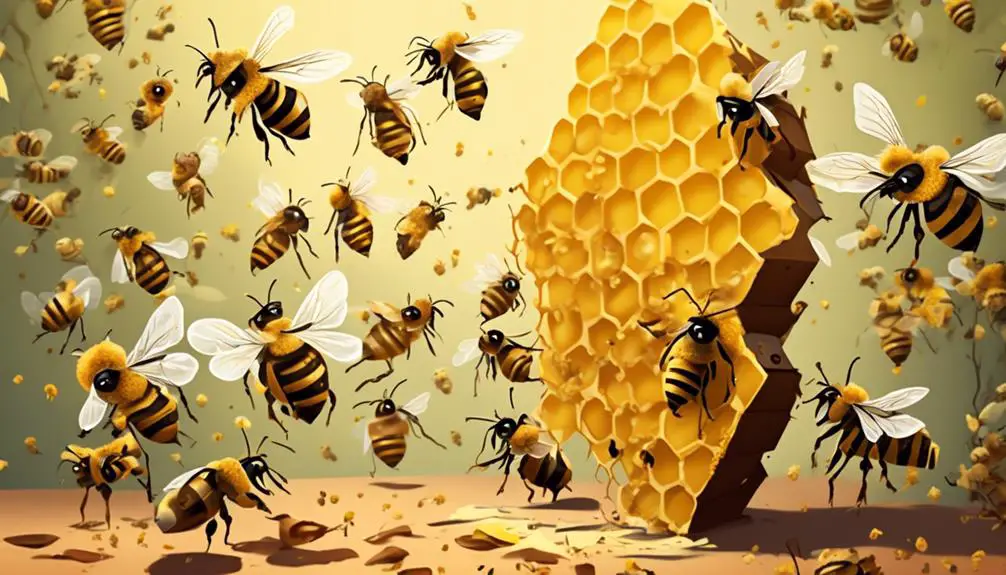
Understanding this seemingly cruel act of rejection is key to grasping just how crucial it's for the continued prosperity and survival of the hive. You see, the rejection of a queen bee isn't a random act of violence; it's a calculated decision, made for the good of the hive's future.
When a queen bee is rejected, it's often because she's not up to the task of ensuring the hive's survival. Maybe she's weak, or sick, or simply not producing enough eggs. Whatever the reason, the worker bees know that their future depends on a strong, healthy queen. So, they reject the unfit queen, and raise a new one, assuring the hive's survival.
This process, harsh as it may seem, is vital for the hive. It ensures only the fittest, most capable queens lead, guaranteeing a strong, prosperous future for the colony. Without it, the hive might be left with a weak queen, leading to its downfall. So, though it's tough, it's necessary. It's a testament to the resilience and wisdom of these remarkable insects.
Frequently Asked Questions
Do Queen Bees Ever Leave Their Hives Voluntarily?
Yes, queen bees do leave their hives voluntarily. It's known as swarming. When a hive becomes too crowded, the queen bee will take flight, leading a large group of worker bees to establish a new colony.
It's nature's way of ensuring the survival and proliferation of the species. You'll often see this fascinating event in the spring, when resources are abundant.
It's an incredible spectacle to witness the queen bee asserting her dominance.
What Are the Signs That a Queen Bee Is Getting Old or Sick?
You'll notice an aging or sick queen bee by her decreased egg production. She'll lay fewer eggs and patterns on the honeycomb will be erratic. Her pheromones may weaken, causing unrest in the hive.
Workers may start creating new queen cells, an act of rebellion indicating they're prepping to replace her. If she's sick, her movements may be sluggish and her body, shriveled.
Now, you're a step closer to understanding the complex world of bees!
How Do Bees Communicate the Need for a New Queen?
Bees communicate the need for a new queen through a process called 'piping.'
You'd find worker bees start to produce new queen cells when the current queen's health or fertility declines. They'll feed these larvae royal jelly, creating new queen candidates.
The existing queen, and the first of the new queens to emerge, will make a distinctive sound, or 'pipe,' signaling their presence and instigating a deadly contest for the throne.
Can a Queen Bee Be Reintroduced to a Hive After Being Rejected?
Reintroducing a queen bee to a hive she's been rejected from isn't typically successful. Once the hive decides she's not fit, it's almost impossible to change their minds. They've likely already started raising a new queen.
If you try to bring the old one back, they'll probably kill her. So, it's best to place her in a new hive or use her to start a new colony.
It's a tough world in the bee kingdom.
Are There Any Other Insects or Animals That Behave Similarly to Bees in Terms of Rejecting Their Leader?
Yes, there are other creatures that behave similarly to bees. For instance, ants and termites also have colony structures where leaders can be rejected.
In the animal kingdom, alpha wolves and lions can be ousted by younger, stronger rivals.
So, you see, this isn't unique to bees, it's a common survival strategy in nature. Stronger leaders ensure the survival and prosperity of the group.
Fascinating, isn't it?
Conclusion
So, you see, even queens face rejection. It's a tough world in the hive, where survival trumps loyalty.
Whether it's due to a damaged body, inferior genetics, or a simple lack of pheromones, rejection can be swift and brutal. Witnessing this process can be startling, yet it's part of nature's intricate design.
The hive's future depends on a strong queen, and if she doesn't measure up, she's shown the exit. That's the raw beauty of the bee world.


